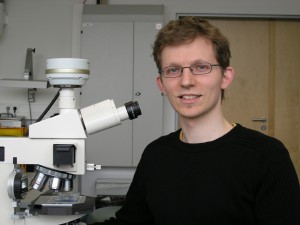May 29 2008
Insects are a source of inspiration for technological development work. For example, researchers around the world are working on ultra-thin imaging systems based on the insect eye. The principle of hyperacuity has now been successfully incorporated in a technical model.

Insects have inspired scientists to transfer features which have been optimized over millions of years to present-day products. Research scientists at the Fraunhofer Institute for Applied Optics and Precision Engineering IOF in Jena, for example, are working on the development of an ultra-thin image sensor based on the insect eye. In the work for his degree dissertation “High-precision position determination with artificial compound eyes”, Andreas Brückner improved the imaging properties of these systems with regard to sensor applications.
Insects have not just two, but thousands of eyes. Each facet of their eye picks up one image point, and the numerous facets, each with its own lens and visual cells, are spread over the surface of a hemisphere. As a result, the insect eye can cover a wide viewing angle – but the resolution of the images produced is not particularly high. This is surprising, given that insects can fly very precise maneuvers. They are able to do so because of the principle of hyperacuity – insects see more than the images actually captured by their compound eyes because the visual fields of adjacent facets overlap, and Andreas Brückner is replicating this phenomenon in a technical system. “The aim was to develop micro-optical compound eyes which contain numerous parallel imaging channels and which are also extremely compact, thinner than 0.5 millimeters,” reports Andreas Brückner. To achieve this, he began by analyzing how images are created in artificial compound eyes. Given that each facet captures one image point, the challenge was to accomplish controlled overlapping in the technical system. With a precise knowledge of the angular sensitivity, image signals of adjacent facets can then be compared with each other. This makes it possible to determine the position of the object viewed in a two-dimensional visual field with an accuracy which is many times higher than the image resolution. A comparison has shown that an artificial compound eye lens can transfer information with an effective image resolution of 625 x 625 pixels although the number of actually available image pixels is limited to 50 x 50. As a result, the sensor can recognize simple objects, precisely determine their position and size, and also reliably detect movements. Brückner is to be presented with the Hugo Geiger Prize (1st place) for the results of his dissertation.
Several projects are already underway to implement the process, for instance as solar altitude sensors in automobiles, for recognizing traffic lanes in driver assistance systems, and in machine vision.